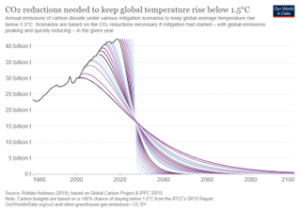Greenwishing our way to deep climate trouble?
By Alessandro Gimona, Senior Scientist, The James Hutton Institute (ICS)

At COP27 the world’s governments did not make any real progress on emissions reductions, while reaffirming that 1.5 oC of warming should be a red line. COP28 started with the revelation that the projected global greenhouse gas (GHG) emission levels in 2030 are expected to be only 2.0% below the 2019 level. It is unclear how these two facts can be reconciled, but one can speculate that CO2 offsets and removals from the atmosphere will have a prominent role in the public discourse, especially considering that the planned worldwide fossil fuel extraction is far too large to be compatible with the 1.5 oC limit. Two important reports were published almost at the same time to inform the debate at COP27. They highlight the value of carbon offsets but also the danger of over-relying on them to achieve Net Zero by 2050.
The Land Gap Report highlights the unrealistic amount of land needed to fulfil Nationally Determined Contributions (NDCs) pledges at the global level, while the UN’s Integrity Matters report, highlights the dangers that the voluntary carbon market essentially be ineffective due to greenwashing, stating that “we cannot afford slow movers, fake movers or any form of greenwashing”.
Greenwashing is certainly a problem. But considering the two reports together -and what land use scientists have been aware of for years- it is also possible to envisage a situation where a good proportion of the pledges by state and non-state actors are made in good faith, but overlook the barriers to delivery. And it is possible that some journalists accept such optimism without deep scrutiny. That overconfidence can be called greenwishing, (as opposed to greenwashing, which implies deliberate misleading), and it is likely to play a growing role, given the political difficulties in reducing actual emissions.
The problem extends to all forms of Carbon Dioxide Removal (CDR), and even to a date-based, rather than a carbon budget-based Net Zero target, and it risks to lead to a substantial overshoot of the “safe” 1.5 oC budget. I explain below.
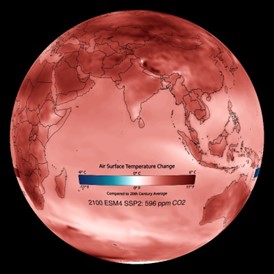
IPCC models estimate that, to keep the global temperature increase below 1.5 oC, an herculean effort is needed, i.e. to halve emissions every ten years, to stay within the “safe” carbon budget compatible with that goal. This would need a complete transformation of the economy within 30 years. But that, as the models show, would probably still not be enough, and up to 300 billion tons of CO2 would also need to be captured and stored by 2050, if overshoot is to be limited. In other words, if we want to avoid crossing some tipping points, not only do we need to reach net zero, but also, after 2050, reabsorb enough CO2 from the atmosphere to stabilise temperature at + 1.5 oC.
The UN has recently pointed out that there is no credible pathway to 1.5 oC, because of the observed insufficient political commitment, but scientists point out that it is still physically possible if enough efforts are made, and that concerns regarding political will should not be interpreted as an invitation to abandon that limit.
Theory and practice, however, are diverging. Models are essentially thought experiments, and suggest what would need to be done, in theory, to stay below 1.5 oC. But, while scenarios’ narratives describe the hypothetical social and political conditions in which reductions could be achieved, they cannot tell us how to achieve those conditions in practice. That is, of course, up to the political process, which has not delivered enough so far, and does not show signs of transformation at COP27.
Reaching Net Zero safely
To reach Net Zero safely, there are several connected barriers to remove.
First, committing to Net Zero emissions by 2050, despite good intentions, could still lead to global emissions too high to stay below 1.5 oC. This is because, at the country level, the trajectory followed in reducing emissions to Net Zero, implies an appropriation (usually arbitrary) of a share of the global “safe” carbon budget. For example, linear reduction and exponential reduction result in quite different total emissions by a given country by 2050. Even if all countries reached Net Zero by 2050, the paths followed matter, to ensure that the globally aggregated choices of all countries don’t result in exceedance of that budget. Incidentally the UK has appropriated a portion that, it has been argued, is a factor of 2 larger than its fair share, and this is probably not an exception.
Despite achieving Net Zero, the global overshoot of the “safe” carbon budget could be substantial and, as we all know, would cause dangerous extra warming.
Removing carbon from the atmosphere
Societal transformation is not an easy task, so policy makers and business leaders could be tempted to think that extra emissions could be dealt with by reabsorbing potentially even greater amounts of CO2 from the atmosphere than the already very high ones postulated by IPCC in scenarios and models that deal with a temporary overshoot compatible with 1.5 oC.
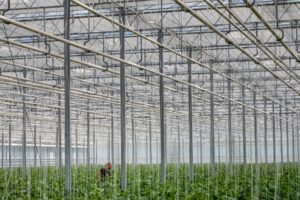
Offsets of various kind, relying on Carbon Dioxide Removal (CDR) from the air might be expected to save the day. These expectations cause an unhelpful confusion between purely theoretical reductions in the future and actual reductions as soon as possible.
Counting on CDR, for example through Negative Emissions Technologies (NETs), allows liberal substitution between negative emissions and actually avoided emissions, while a more sensible way forward would be to set separate targets for both.
Given the role that NETs are supposed to have in limiting CO2 atmospheric concentration, a crucial question is: “how feasible is the use of NETs to achieve temperature stabilisation in practice?”
The answer is still uncertain but many scientists believe that it is a dangerous gamble to assume that NETs will satisfy the huge needs for CO2 capture, given all the barriers to NETs implementation.
A substantial problem with NETs, and CDR in general, is that their feasibility, at the scale needed, is in doubt. Large-scale technologies, ready to be deployed to capture and store several billions of tons of CO2 per year, do not exist. And not only do they require robust policies, that put in place economic instruments to guarantee potentially very costly capturing of CO2, but their technical, social, political and institutional feasibility at global scale is very uncertain.
This is why the risk of their (mis)interpretation as a sort of alternative to emission cuts by part of the private sector, promising to offset large amounts of future emissions, has worried many observers (including the UK CCC that warned that purchase of carbon credits should not be “used as a substitute for direct business emissions reduction”).
Leaving aside the fact that other greenhouse gasses (GHGs) are not perfectly substitutable with CO2, the question of CO2 capture is central. In the absence of very rapid actual cuts, NETs are in danger to become a procrastination tool. The more the world community assumes that it will be able to reabsorb huge quantities of carbon from the atmosphere, quite possibly much more than it is practically and technically feasible, the more it relies on NETs, while neglecting to invest enough to rapidly move away from fossil sources of energy. The results is likely to be a carbon debt that cannot be repaid, or is repaid too late to avoid crossing tipping points.
NETs and their discontent
I will mainly talk about perplexities about land-based NETs, as land use is my field of expertise, but, very briefly, concerns exist also for Carbon Capture and Storage (CCS), Direct Air Capture (DAC) and biochar production.
So far the track record of carbon capture and storage (CCS) has been poor, to be generous. For example, the amount of CO2 captured by CCS between 1996 and 2020 is around 0.03% of the global emissions in the same period. Hence, serious doubts on the CCS’ potential at the planetary scale appear justified.
A recent Oxford University report reiterates expert’s scepticism regarding scalability, and estimates that the cost of a high CCS pathway to net zero would be about an extra $1 trillion per year, compared to a low CCS pathway to net zero. While some CCS is necessary for difficult-to-abate sectors, renewables are cheaper and increasingly cost-effective compared to fossil fuels, which should be phased out.
As to Direct Air Capture, (DAC) to be carbon negative, it requires a huge amount of -not yet available- renewable energy. For example, the amount of energy needed to mitigate only 20% of present emissions is roughly equivalent to the whole global electricity production at present. Vast amounts of energy to both capture and build and run the whole life cycle-related infrastructure would therefore be needed, making the practical feasibility of DAC questionable, especially because of the costs: the ratio between DAC’s future capital costs and carbon prices would have to decrease very substantially to make it economically viable. To better understand the scaling-up challenge it is instructive to consider that the few existing or planned DAC plants can capture in a whole year just seconds of global emissions.
Finally, biochar, which is added to soils, appears to have a potentially useful but relatively small role, with need to scale up over 63 times present charcoal production capacity to attain a 0.1ppm atmospheric reduction.
These technologies, therefore, at the moment, have limited capacity and economic feasibility and might not overcome soon enough the obstacles needed to scale up their potential. The advantage, however, is that removal is permanent, unlike in the case of nature-based methods.
Plant and soil- based CDR methods
According to the 2022 UNEP’s Emissions Gap Report, most G20 countries don’t exclude the use of offsets (see Table 3.4) to achieve Net Zero. Yet land-based offsets at a very large scale are problematic.
CO2 capture from the air can also be done using nature based methods, either with plants (BECCS, afforestation, ecosystem restoration ), or by storing Carbon in soil. The latter often needs photosynthetic activities to capture the carbon in the first place, but there are also theoretical ways to restore degraded soils over large areas using mined silicates and other techinques. This also has non trivial caveats in terms of scaling-up.
An aspiration to increase global soil organic matter stocks by 4 per 1000 per year was expressed at COP21. Our own research, and that of several other scientists, show that this is very ambitious in many areas of the world, including in Scotland.
In general, one has to remember that global CO2 equivalent emissions are around 52 Gtons per year (and rising) and be aware of the feasible orders of magnitude of mitigation achievable, while also bearing in mind that plant and soil-based methods are not permanent, because liable to reversal due to various types of degradation and disturbance.
The barriers are partly biophysical and partly social and economic.
Models that propose very large land use changes such as Integrated Assessment Models (IAMs,) have a limited amount of biological and social realism, so are likely to overestimate potential.
Physical limits to plant-based methods are suggested by the present global size of the terrestrial carbon sink, (which is around 3.1-3.6 Gtons of Carbon or per year or 11-13 Gtons of CO2) and land availability. Capturing at least 300 additional Gtons of CO2-as proposed by IPCC -or more by end of century, (depending on overshoot and other NETs) could require a substantial increase of the terrestrial sink, which is a great challenge to say the least, even ignoring the damage that warming can do to ecosystems. In the long run, a lot of carbon (up to 250 Gtons) could be accumulated in forest ecosystems if properly restored and managed. However their potential contribution by 2050 is likely to be restricted to a few Gtons per year, given that most of the gains would be in the soil pool, which accumulates more slowly.

In a technical review based on a considerable amount of data, Baldocchi and Penuelas (2019) point out that there are significant constraints to increasing global carbon sequestration by the extent needed to balance global emissions. This is due to physiological reasons, the amount of land area required, permanence of the carbon, as well as changes in albedo that might partly counteract the cooling effect of sequestering CO2 out of the atmosphere. One important conclusion is this: “..to increase ecosystem photosynthesis, the logical knobs to turn are to increase: (a) length of the growing season by substituting perennial for annuals; (b) leaf area index by increasing the water balance and (c) photosynthetic capacity by retaining nitrogen. Doing any of these activities on large enough space scales will remain a challenge”
Biomass Energy with Carbon Capture (BECCS)
The land use change that would be required to implement Biomass Energy with Carbon Capture (BECCS) is very large and their trade-offs are likely to be socially unacceptable in many situations.
For example, Smith et al reviewing the potential of various NETs, estimate (consistently with similar studies) that deploying BECCS could deliver 3.3 GtCeq./yr of negative emissions and would require a land area of ~380-700 Mha in 2100 (for comparison this is, roughly between the surface area of the whole Indian subcontinent -excluding Pakistan – and the size of Australia ). More BECCS -based mitigation would require amounts of land that are unlikely to be available, due to competition with food production and biodiversity. Therefore, in a geopolitical, and physical climate, that threatens food security, many countries might not be able to afford the trade-off.
A report by the European Academy of Sciences is sceptical on the deployment of BECCs at global scale, noticing that in the absence of dramatic yield increases and reduction in land devoted to livestock, they would compete with food crops for arable land, and “require conversion of the remaining areas of natural habitats with associated extensive biodiversity loss”. This is also echoed by a briefing paper by Imperial College which reviews limitations and trade-offs with water quality and quantity, soil depletion, potential induced deforestation, and concludes that “Policy makers should be sceptical about a future that is uniquely or heavily reliant on BECCS, and instead prepare for, and implement, alternative mitigation options as soon as possible”.
Similar caveats are contained in the 2021 joint IPCC-IPBES report which estimates that the sustainable mitigation potential of BECCS is 1-2.5 Gt CO2 yr-1 (current yearly CO2 emission are around 40 Gtons and growing), and in a letter by leading land use scientists to the EU parliament, pointing out that bioenergy policy can result in offshoring emissions, deforestation and competition for food production.
In general, it should be noted that any policy requiring large land use change on “marginal land” in less developed countries, is likely to affect seriously small farmers -who produce a third of the world food– and indigenous people, and might dispossess them of their land thus threatening their livelihood and food security. Therefore even for such estimates, without an in-depth country-based analysis, it is difficult to assess the acceptability of large land use changes induced by BECCS, although it is possible that market forces prevail in some cases over social sustainability.
As far as the UK is concerned, a 2020 study also found potentially large trade-offs and concluded that “reliance on BECCS using only domestic bioenergy crops to meet the Paris Agreement in the UK would be highly challenging”. To deliver the UK Committee on Climate Change BECCS scenario of 67 Mt It would require ca 4 Mha of land and the import of part of the feedstock from abroad. And of course, as in other parts of the world, it would need to convince land managers to change their land use.
Given the above concerns, it is perhaps unsurprising that Earth System experts are sceptical about the deployment of BECCs (while Integrated Assessment Modellers less so).
From all of the above evidence it is reasonable to conclude that the role of BECCS is highly speculative, conclusions that appear reinforced in a geopolitical climate in which food security concerns are real for many countries.
Nature based methods are not permanent solutions
In this context, Nature Based Solutions (NbS), i.e. solutions based on restoring ecosystems appear more attractive. There is no doubt that restoring virtually all ecosystems and both preventing and reversing deforestation have multiple benefits, such as carbon storage, biodiversity, flood attenuation, and many others. Restoration also has the added benefit of reducing soil erosion and degradation, which, at present, adds some 5 Gt CO2 y-1 globally to emissions due to carbon loss from the soil.

While restoring ‘nature’ is crucial for the well-being of humans and many other species, given the size of the global emissions, there is a risk to overestimate, in good faith, what NbS can do for the climate.
The size of the NbS contribution in theory, and above all, in practice, is also uncertain and needs to be put in perspective.
In the UK, restoring damaged peatlands would prevent the equivalent of some 4% of the national emissions (less if the total UK footprint is considered) but many peatlands would become a sink in a few decades only if the climate still allows their thriving.
Estimates of potential contribution of realistic levels of afforestation to the mitigation of the present UK’s global carbon footprint vary, but are around 1%, and, as our own research shows, around 10% for Scotland.
At the global level, the potential contribution is higher, but still dwarfed by emissions, even before accounting for the failure of many planting schemes, and for the increase in climate-related mortality risks.
A scenario study by Griscom et al. (2018) estimates that it would be theoretically feasible to use “Natural Climate Solutions” to sequester around 24 Gigatons of CO2 per year, while safeguarding the production of food, fibers and habitat for biological diversity. Seddon et al. (2020) in a thorough review of NbS that includes, among other measures, reforestation and afforestation, revise Griscom’s estimates down, accounting only for “cost effective” implementation and estimate that the total mitigation potential of land- based NbS is around 10 Gt CO2 y-1 . This is broadly confirmed by more recent work , and echoed by IPCC But another study, that tries to account for feasibility is much more conservative, pointing at large trade-offs with agriculture and commercial forestry, and estimates a median potential of around 1.3 Gt CO2 y-1 between 2020 and 2100.
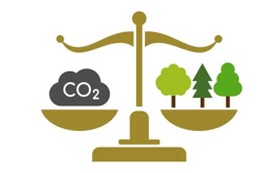
Policies and offsetting schemes to halt gross deforestation would also generate a net carbon uptake in 2030 of up ro 1 Gt CO2 annually, but considering net deforestation would have little effect.
However, none of these studies account for the projected weakening of the forest carbon sink that is likely to happen if the global temperature increases by ca 2 oC. This means that – on the present warming trajectory- in a few decades vast areas of forest could turn into carbon sources, reversing the “offsetting” they produced in the previous years and thus losing any reabsorbing potential, on which a temporary overshoot strategy could rely. Additionally, the reduction of albedo is ignored: afforestation of drylands, often advocated in global studies. would be likely to have little net effect on climate warming, despite accumulating carbon.
An important reason for concern about practical feasibility of very large scale restoration, is that to reach 10 Gt CO2 y-1 would involve a staggering amount of diverse and coordinated activities worldwide, and closed work with local communities. Therefore although high standards are rightly proposed, they are also likely to limit the amount of land available for NbS.
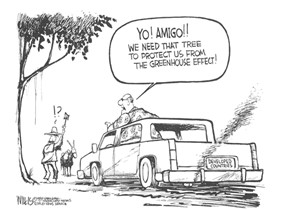
Also, wide scale ecosystem restoration would require a very remarkable U-turn compared to the presently observed trends, resulting, among other things, in substantial changes in the demand for the land-based commodities that have replaced many of the ecosystems to be restored, and probably also a substantial change in global diets. So NbS are unlikely to be stand-alone remedies that minimise societal change, but would need to be part of the required transformation of society and of the economy.
A further reason for concern, is that most wide-scale ecosystem restoration has often been advocated for years in various forms also when discussing the global biodiversity crisis. One only has to examine the literature on why most of the Aichi Targets were failed, to realise that barriers such as dysfunctional institutions, lack of political leadership and inadequate policies, lack of technical capabilities, scarce participation, land ownership, and political will are likely to be not negligible. Our own analysis of the barriers preventing the achievement of biodiversity targets identified political, social and economic barriers that are still in place. These are likely to apply to climate-related NbS at the global scale.
For all the above reasons 10 Gt y-1 should be taken as rather optimistic upper estimate of the amount NbS can offset.
The voluntary carbon market demand – a top-down view
1.3 Gt CO2 y-1 might well be a lower-end estimate, but unfortunately appears more realistic than 10 Gt CO2 y-1 . This, and what can be accomplished by halting gross deforestation, have important implications for offsetting and for the voluntary carbon market, which has shown great enthusiasm about various forms of CDR including land-based offsets, but is also in great danger of over-promising.
As the CCC has stated for the UK, “there is a real risk that voluntary carbon markets slow progress towards Net Zero”.
Similar consideration apply at the global level, and future medium term reductions of questionable feasibility can crowd out actual reductions in the short term, thus fuelling corporate wishful thinking. For example, the Africa Carbon Markets Initiative claims it wants to produce 1.5 billion credits (i.e. 1.5 Gtons) per year by 2050, using a variety of approaches. This is higher than the 1.3 Gtons mentioned above, so the contribution of nature-based methods has to be carefully assessed, especially in a continent where multiple challenges, such as food security, biodiversity, droughts, floods and conflicts, will have to be tackled in the next decades. Also, the aforementioned problems affecting the scaling up of artificial CDR methods would have to be solved.
As much as initiatives aspire to be green, are they likely to fulfil investor’s expectations? In many cases the answer is likely to be no, so many businesses are in serious danger of over-relying on promises of future offsets to achieve their emissions reductions goals. But by the time we are sure, most executives signing off reduction plans today will have retired. And if policy makers will have relied on those reduction to stabilise temperature, the cost of the unrepayable global carbon debt will have to be borne by billions of people and hundreds of other species.
Carbon is not a good that can be manufactured at will to satisfy market’s demands. The Planet has physical and social limits, and therefore, if most businesses were to pledge substantially to reduce emissions through offsets, many would inevitably end up misleading investors, deliberately or not. Integrity then, seen from top down – applies to the whole market, not just to individual traders. This is true even ignoring the non-permanence of the NbS-stored carbon, that is vulnerable to fire, storms, floods, etc. and likely to become more so as the extreme events become more frequent.
The UN’s Integrity Matters report provides useful principles and implicitly devalues NbS, by emphasising permanence.
“Non-state actors must prioritise urgent and deep reduction of emissions across their value chain. High integrity carbon credits in voluntary markets should be used for beyond value chain mitigation but cannot be counted toward a non-state actor’s interim emissions reductions required by its net zero pathway. • High-integrity carbon credits are one mechanism to facilitate much‑needed financial support towards decarbonizing developing country economies. As best-practice guidelines develop, non-state actors meeting their interim targets on their net zero pathway are strongly encouraged to balance out the rest of their annual unabated emissions by purchasing high-integrity carbon credits. • A high‑quality carbon credit should, at a minimum, fit the criteria of additionality (i.e. the mitigation activity would not have happened without the incentive created by the carbon credit revenues) and permanence”
And the 2022 UNEP emissions gap report provides an overview of solutions leading to a sharp decrease of actual emissions.

To conclude, while halting deforestation and restoring ecosystems are very important goals, and offsets and NETs certainly have a role to play, it is important to realise that, given the enormity of the global emissions, ecosystems can only play a secondary role, as there is a limited amount of land able to provide offsets. As to technology, there is rather limited capacity to capture carbon at the required scale.
This is why the lack of progress in climate negotiations on the emissions front is disappointing: we are still poking the climate dragon.
1.5 oC is a limit, not a target: every tenth of degree counts and its watering down would be dangerous. Sadly, there are no short cuts, and in the end it comes down to how decisive societal action and political leadership is in the next decade: without a very rapid decarbonisation of energy generation and a transformation of all sectors of the economy, we are likely to greenwish our way to an hostile climate and past tipping points.
